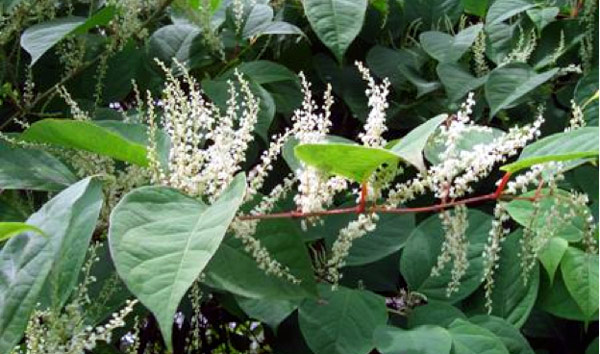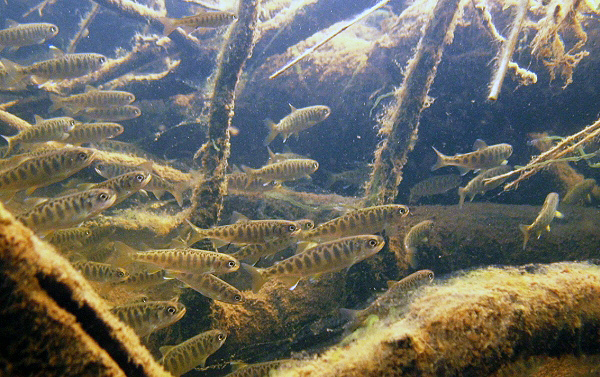
Reading Bellamy Fitzpatrick’s opening essay in the premier issue of Backwoods: A Journal of Anarchy and Wortcunning, I started falling in love with Backwoods even though it aims fusing anti-civ theory with the suspect practice of permaculture. Bellamy laid out the foundational philosophy beautifully. Then on to the permaculture essays and the predictable happened. Permaculture’s civilized ways revealed themselves.
In the essay The Garden Path, Kansan Kitsune advocates for the use of Japanese knotweed (Polygonum cuspidatum). Any forest healing person knows what a massive problem that “invasive species” is causing, at least along Cascadian rivers, degrading and destroying diversity and habitat. This plant mainly grows along waterways, and mainly reproduces vegetatively. Cutting any part of the plant can trigger root growth up to 4 feet deep, and rhizome growth up to 20 feet across. Despite the size of the roots, instead of holding soil together the roots loosen soil, destabilizing ravine slopes, moving sediment into waters where organisms like juvenile salmon suffocate. I’ve walked through acres of it monoculturizing the ground and middle stories of forest along the Snoqualmie River. It is a surreal epitome of civilization’s havoc.
Where Bellamy’s philosophical voice is strong, his understanding seems weak on wild ecosystem connections and dynamics. Though it may be true that while civilization harms wild life permaculture harms less, sometimes by advocating for something like knotweed, permaculture destroys more. Even civilization doesn’t deny the obvious reality of invasive knotweed and actively try to remedy it. Permaculture calls for more of it? Misunderstanding and harmful use of knotweed serves as an exemplar of civilized humans who knee-jerk rationalize to defend invasive species, many within the realm of permaculture.
Backwoods was born in a time of strange conflict where rewilders strive to rid civilization for themselves by obliviously reaping it onto the struggling remaining wild. Is the compromise permaculture? A forest healer friend points to a more complementary place for fusion of anti-civ theory with praxis: “There is a huge need to overcome the permaculture mentality and to merge anti civ philosophy with ecological restoration. Unfortunately, when I was involved in anti civ circles, folks rarely new much about wild ecosystems. Now that I’m a restoration ecologist, I’m rarely around people who see the need for scaling down and reversing domestication outside of select preserved lands.”
Backwoods: May I recommend inviting restoration ecology praxis into the Backwoods fusion, and limiting permaculture submissions to authors who only advocate working with plants indigenous to given bioregions, with possible exceptions made for species moving in on their own, for their own reasons and on their own terms, shifting in from nearby, not introduced by the invasive hominid species. With our lack of understanding, that’s the least harmful approach. This may be Backwoods only shot at being a healing and rewilding force in the midst of strange conflict in strange times.
book recommendation: http://www.bringingnaturehome.net/
forests forever,
rio
ecofeminist@riseup.net

Hi,
I don’t have my copy of backwoods in front of me right now, but I am pretty sure The Garden Path is about an actual forest garden in Shizuoka Japan. I didn’t interpet it as advocating for spreading japanese knotweed around the world.
That said I would be interested to hear more frok backwoods about things like invasives and the interplay between cultivars and native forest species.
All the best, and definitely forests forever (and deserts, grasslands, etc!)
LikeLike